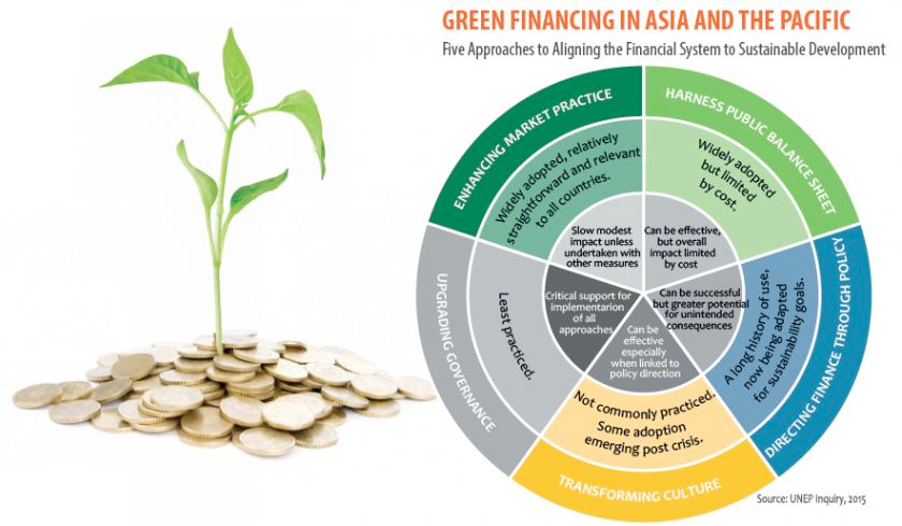Financial Planning for a Sustainable and Eco-Friendly Lifestyle
Introduction:
In today’s world, individuals are becoming increasingly aware of the impact their actions have on the environment. Many people are adopting sustainable living practices to reduce their carbon footprint and contribute towards a healthier planet. However, one aspect that often gets overlooked in this pursuit is financial planning.
Incorporating sustainable and eco-friendly practices into your lifestyle can be more affordable than you might think. By implementing certain strategies, you not only make a positive impact on the environment but also improve your financial well-being. In this article, we will explore how financial planning can help you achieve a sustainable and eco-friendly lifestyle while safeguarding your future.
1. Setting Financial Goals:
Before embarking on any financial plan, it’s crucial to define clear objectives aligned with sustainability values. Determine what matters most to you in terms of environmental impact and prioritize those goals accordingly. For example, if reducing energy consumption is important to you, then investing in energy-efficient appliances or solar panels could be part of your financial plan.
2. Budgeting:
Creating a budget is an essential step towards achieving any financial goal – including sustainability. Start by assessing your income sources and expenses meticulously. Identify areas where you can cut costs without compromising your eco-friendly lifestyle choices.
Consider switching from disposable products to reusable alternatives like cloth napkins or beeswax wraps instead of plastic wrap for food storage. Additionally, meal planning can help reduce food waste while saving money at the grocery store.
3. Debt Management:
Debt can hinder progress towards both sustainability goals and overall financial stability. Prioritize paying off high-interest debts first as they accrue additional costs over time that could otherwise be allocated toward environmentally friendly investments.
Consolidating debt through low-interest loans or negotiating better repayment terms may free up funds for green initiatives such as installing energy-efficient windows or upgrading insulation in your home – ultimately leading to reduced utility bills.
4.Investing in Sustainable Businesses:
Aligning your investments with sustainable values can have a significant impact on both the environment and your financial portfolio. Look for companies that prioritize environmental stewardship, social responsibility, and ethical practices.
Sustainable investment options include green bonds, renewable energy funds, or socially responsible mutual funds. These investments not only contribute to a greener future but also offer potential financial returns.
5. Energy Efficiency:
One of the most effective ways to reduce your environmental impact is by adopting energy-efficient practices. Evaluate your home’s insulation, lighting fixtures, and appliances to determine areas where improvements can be made.
Consider investing in LED bulbs that consume less energy and last longer than traditional incandescent lights. Upgrading to ENERGY STAR certified appliances like refrigerators or washing machines can significantly decrease utility bills while conserving resources.
6. Transportation Choices:
Transportation accounts for a large portion of carbon emissions globally. By opting for alternative modes of transport such as walking, biking, carpooling, or using public transportation whenever possible, you can reduce your carbon footprint while also saving money on fuel costs.
If purchasing a vehicle is necessary, consider investing in an electric or hybrid model which requires less fuel and emits fewer greenhouse gases compared to conventional vehicles.
7.Food Choices:
Adopting sustainable food choices not only benefits the planet but also improves personal health and saves money. Prioritize locally sourced organic produce from farmers’ markets or community-supported agriculture (CSA) programs over imported goods with high carbon footprints due to long-distance transportation.
Reducing meat consumption or adopting vegetarian/vegan diets can significantly reduce greenhouse gas emissions associated with livestock farming while being more budget-friendly in many cases.
8.Waste Management:
Proper waste management is essential for sustainability efforts. Implement recycling systems at home and minimize single-use plastics by utilizing reusable bags and containers when shopping or packing lunches.
Composting organic waste allows you to divert it from landfills, enriching the soil in your garden or supporting local community gardens. Additionally, repairing items instead of replacing them helps reduce waste and saves money.
9.Education and Collaboration:
Stay informed about sustainable practices and financial opportunities by attending workshops, webinars, or joining local environmental groups. Engaging with like-minded individuals can provide valuable insights and create a network for sharing ideas.
Collaborating with others in your community can lead to initiatives such as bulk buying renewable energy sources or organizing neighborhood composting programs – making sustainability more affordable through shared costs.
Conclusion:
Financial planning is not only vital for securing your future but also plays a significant role in achieving a sustainable and eco-friendly lifestyle. By setting clear goals, budgeting wisely, managing debt effectively, investing in sustainable businesses, adopting energy-efficient practices, making conscious transportation choices, prioritizing sustainable food options, implementing proper waste management techniques, and staying educated within your community – you can align your finances with your commitment to the environment while saving money along the way. Remember that every small step counts when it comes to creating a greener future for generations to come.

Leave a comment